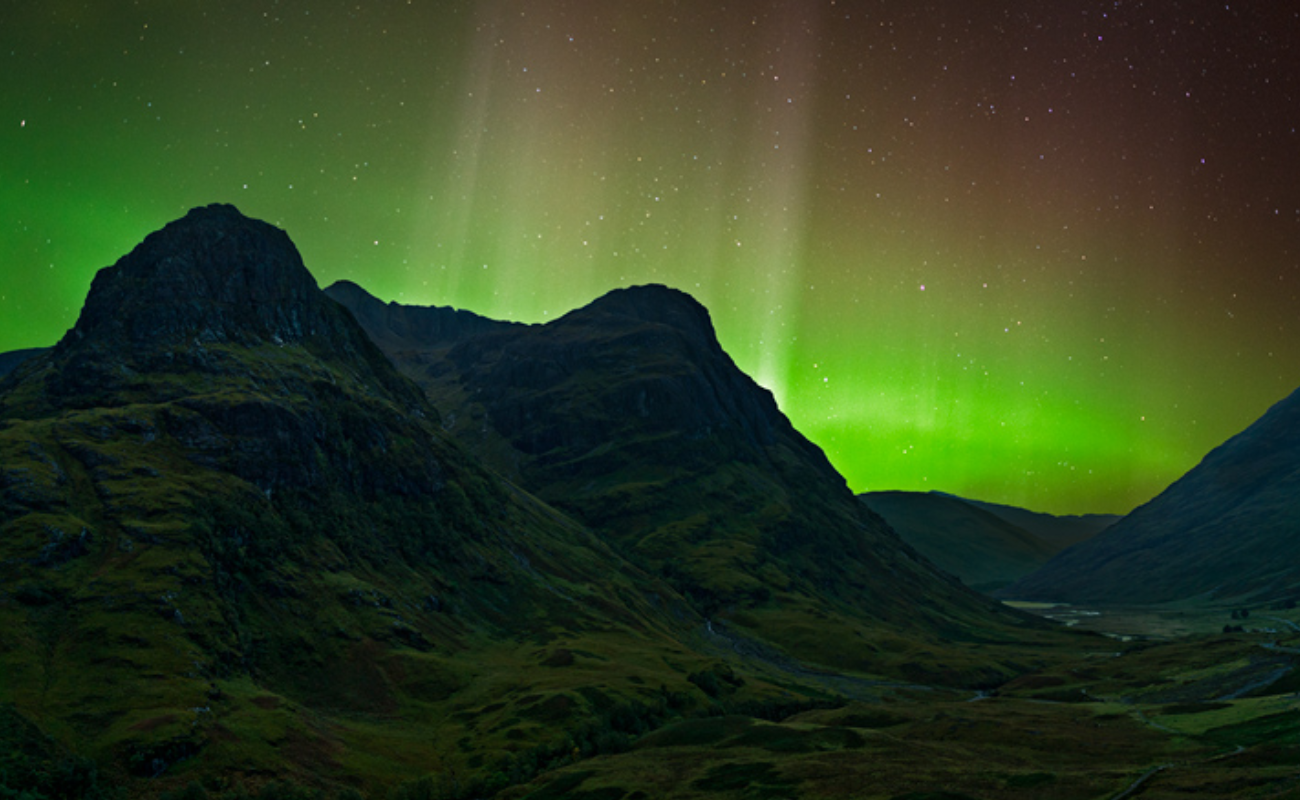When was the last time you had a ‘life moment’?
A magical punctuation in your day-to-day doings, an otherworldly experience that stopped you in your tracks, emptied your mind of all thoughts, and for a short time, it was just you, the world around you and that moment? We don’t mean those moments of unbridled joy when you discover that someone else in the house has emptied the dishwasher, your teenager laughs at your joke, you discover there is one more season still to watch before you wave goodbye to your box set, or it’s a straight green traffic light run on the day you’re running late.
These are great moments though…
We’re talking about a rare moment of magic that only a few get to experience in their lifetime, and if you’re lucky enough to be heading up to stay at one of our Highland properties this winter, you might too
The Northern Lights, the Aurora Borealis or the ‘Mirrie Dancers’ as they say in Shetland (Mirr meaning ‘shimmer’) – the awe-inspiring phenomenon that has aurora hunters dashing all over the countryside in their pyjamas and coats, clutching blankets and flasks to experience these bursts of solar activity that nature occasionally presents in the wee small hours.
As we move into January and February with those short days, cold crisp nights and clearer skies, we have the optimum conditions to experience the auroral displays, particularly around The Highlands, where there’s less light pollution and with 2024 being hailed as a blockbuster year for seeing the Northern Lights; you might want to think about booking a cosy, cosmic focussed getaway with us this winter.
The science bit…
What actually causes the Northern Lights? These incredible, natural light shows result from the interaction between the Earth's magnetic field and charged particles from the Sun. The charged particles are accelerated towards the Earth's poles by solar winds, and as they enter Earth's atmosphere, they collide with atoms and molecules, causing them to emit light of various colours. The specific colours you’ll see depend on the type of gas in the atmosphere and the altitude at which the collision occurs.
2024 is likely to be an unusually good year for seeing the Northern Lights as the sun is predicted to reach the peak of its 11-year activity cycle, known as ‘solar maximum’, bringing a more vibrant, dramatic display.

What to expect...
A dazzling display and a ripple of cosmic energy. Vibrant blue, green, pink and purple arcs and spirals dance across the inky blue northern skies.
A shimmering spectacle and mesmerising moment as you stand with your feet rooted to the ground, a crisp nip in the air, surrounded by a blanket of tranquillity, the energy of the sky filling the landscape with an ethereal glow.
Where to see the ‘show’
The Scottish Highlands are one of the best places to see this magical display, thanks to their latitude (northern Scotland actually lies at the same latitude as Stavanger in Norway and Nunivak Island in Alaska).
Named in 2023 by Conde Nast Traveller as one of Scotland’s Top 10 places to visit, Glencoe offers an otherworldy escape with its cinematic panoramas, towering mountains, deep and dark, dramatic valleys, cascading waterfalls, tranquil lochs and that famous long and winding road. It’s a perfect location for capturing some of the most dramatic views of the Northern Lights, as some of our team did recently.
Nearby Ballachulish, situated on the shores of Loch Leven, offers another ideal location for your starry sky adventures, with one of the highest mountains in the area providing a stunning backdrop for your celestial show. Choose either Kingshouse Hotel, Isles of Glencoe Hotel, or the Ballachulish Hotel for your ‘aurora hunting’ base. Think hearty Scottish breakfasts, invigorating walks, long, cosy lunches, crackling fires, delicious wines, late-night drams and the comfiest sleeps (when you’re not chasing the aurora).
Aurora Hunting Tips
-
Check the forecast and conditions – AuroraWatch UK is the app of choice for stargazers. You’ll send you alerts on when the Northern Lights are likely to be visible on a green, yellow, amber and red basis.
-
Find your spot – the less light around you, the better.
-
Take a compass and point north (or look for the North Star).
-
Dress warmly – temperatures will be low, so hats, gloves, warm socks and boots, waterproof trousers and your cosiest jacket are a must. You don’t know how long you’ll be out and about waiting for the ‘show’ to start.
-
Bring a flask and snacks to keep you warm and energised.
-
Charge your phone/camera – we all know that sinking feeling and niggling of a low battery during one of life’s ‘moments’.
There won’t be a better time to see the Northern Lights in the next 11 years, so give yourself a celestial start to 2024 and join us for that once-in-a-lifetime moment of shimmering solar solitude.
Start your celestial journey here.



